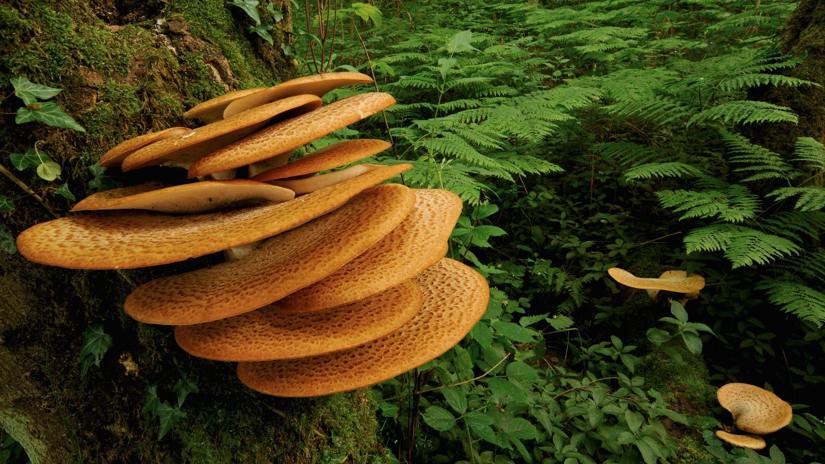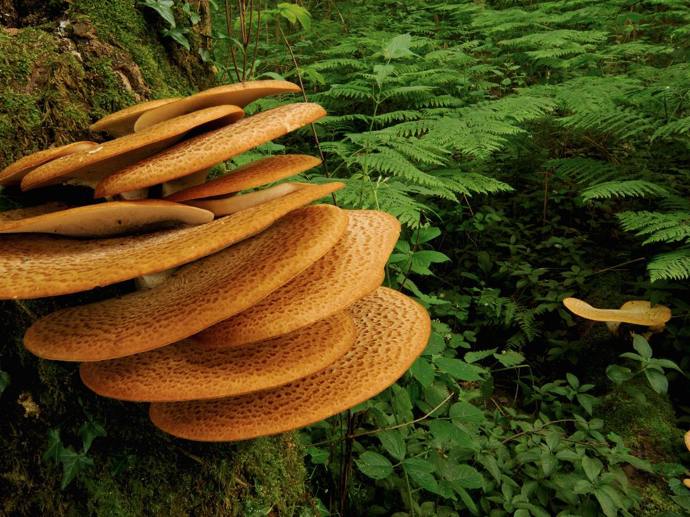Common names: velvet shank, winter mushroom
Scientific name: Flammulina velutipes
Family: Physalacriaceae
Fruiting season: late autumn to early spring
Habitat: dead wood
A burst of sunshine in wintry woods, the bright orange of velvet shank fungus is a treat for the eyes on a dark day. Not only are they a cheery sight but they are also edible.
Common names: velvet shank, winter mushroom
Scientific name: Flammulina velutipes
Family: Physalacriaceae
Fruiting season: late autumn to early spring
Habitat: dead wood
Velvet shank can grow up to 10cm tall and 7cm across. It has a fibrous, velvety stalk and bright orange cap which can be very slimy after rain. They fruit throughout winter when few other edible mushrooms are around and can grow in large numbers in very close proximity.
Cap: bright orange, 2–10cm across, paler at the edge and very slimy in wet weather. They dry to a smooth sheen. The caps are often distorted because of growing in such close proximity to each other.
Gills/spores: the gills are broad and white at first, becoming pale yellow as the fruiting body matures. The spores are elliptical and smooth and the spore print is white.
Stipe (stem): tough and fibrous, yellow at the top and darkening through brown to black at the base, becoming velvety when mature.
Not to be confused with: the sheathed woodtuft/brown stew fungus (Kuehneromyces mutablis) which has darker gills and brown spores, though the cap is similar to that of velvet shank, and the funeral bell (Galerina marginata) which can appear in mild winters and is poisonous. However, it has a ring on the stem which distinguishes it from velvet shank.

Credit: Alex Hyde / naturepl.com
Velvet shank is fairly common throughout the UK and is also found in most parts of mainland Europe as well as Asia, North America and North Africa. It grows in dense, tiered clusters on decaying broadleaved trees, particularly elm, the bright orange caps especially noticeable on dark winter days.
Velvet shank is a valuable winter food source for some woodland invertebrates.

Credit: Ian West / Alamy Stock Photo
It is edible but should always be cooked before consuming. The stems are quite tough so only the caps are eaten, and the cap’s skin should be removed prior to cooking. They are highly prized by foragers as they are one of just a few edible mushrooms available in December. It has been reported that velvet shank contains a high level of anti-cancer compounds.

Appearing in the winter, velvet shank can withstand frost and snow and can even survive being frozen solid!


Amy Lewis • 21 Oct 2021
Bracket fungi, also known as shelf or polypore fungi, grow on both dead and living trees. Here we list some of the UK's more common and easily distinguished types to get to grips with.